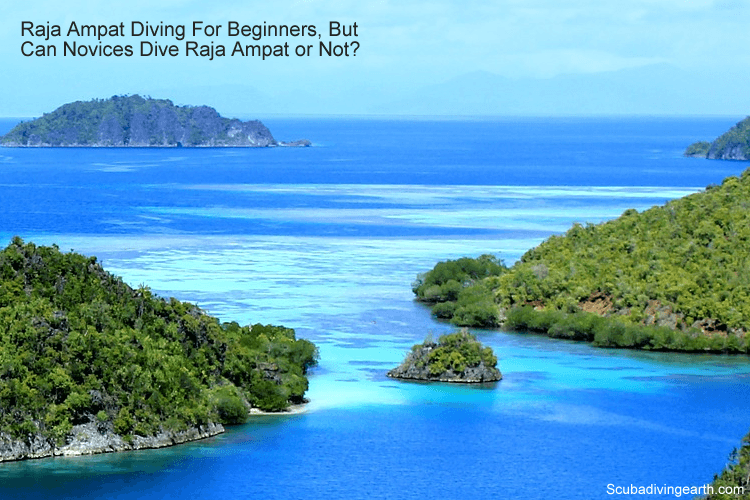
Raja Ampat is a scuba diver’s mecca, but is it suitable for beginners to dive?
Described as one of the most bio-diverse marine regions on earth. But is Raja Ampat open to all certification levels of scuba diver?
Not all the dive sites at Raja Ampat are suitable for scuba diver beginners. This is due to the strong currents in the region. To enjoy the bio diversity of Indonesia’s Raja Ampat, you need to be a more advanced scuba diver with plenty of diving experience. You should be adept at drift diving before you go.
The best way to dive Raja Ampat, Indonesia is by a scuba diving liveaboard. You can check the latest and best deals on Raja Ampat liveaboards using the following window:

Raja Ampat where is it?
Raja Ampat is situated off the northwest tip of Bird’s Head Peninsula on Papua. Where Papua is the most eastern Island of this Indonesian Archipelago.
The Raja Ampat islands are remote and relatively undisturbed by humans. Although they are dived significantly these days. The marine diversity you’ll experience in Raja Ampat is strongly influenced by where it’s situated between two great oceans.
Raja Ampat is in the middle of the Indian Ocean to the west and the Pacific Ocean to the east.
As a result of its position in between these two oceans, there are significant currents that run through the region. It’s these currents that feed the coral and fish larvae, which in turn feed the larger fish and predators in the region.
These strong currents are the life-force of the vibrant reefs systems around the islands. The currents are at their strongest around the edges and at their most manageable in the center.
The trick to diving in strong currents around Raja Ampat is to work with the flow of the current, rather than against it. You just can’t fight it! But actually, a drift dive is really good fun. It’s like you’re flying underwater.
It’s these currents that are the reason why Raja Ampat isn’t recommended for beginner scuba divers.
The reason for this is better explained by understanding the basic skills required for safe scuba diving in conjunction with the type of diving in Raja Ampat.
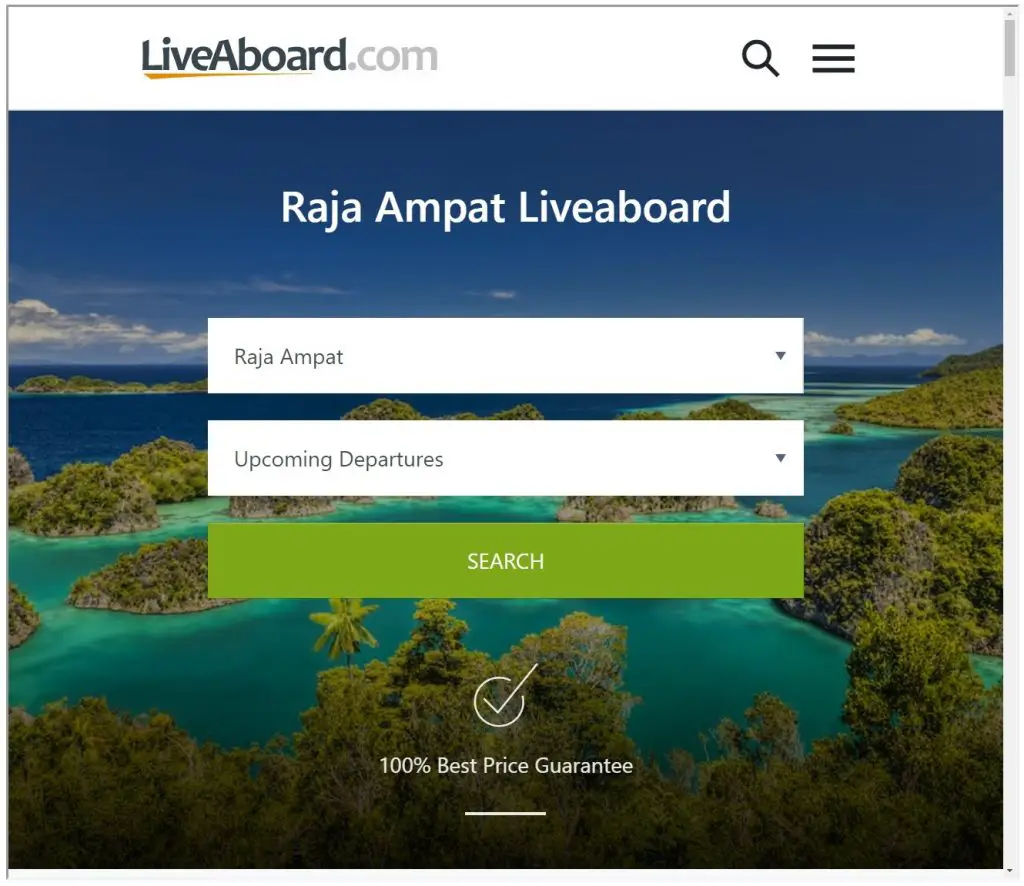
Why Raja Ampat isn’t ideal diving for beginners
Before you read on, it’s worth you reading the quote below from someone who experienced a strong down-current in Raja Ampat!
This would be challenging for even the most experienced scuba diver, let alone a beginner.
I dived Raja Ampat in October, I only had about 16 dives and actually got stuck in a down current which took me to 30 meters and out of air which was damn scary! I was diving with my friend who is an instructor who said she had never experienced currents like it. The other five dives were all fine however I felt not as easy to relax there as I have diving other places.
It is incredible, however I would advise getting at least an Advanced before going to help with the depth of some of the dive sights. There are some easier sights and just snorkeling around the house reef on our island of Kri there was so much wildlife.
Is Raj Ampat diving appropriate for beginners? – Lonely Planet
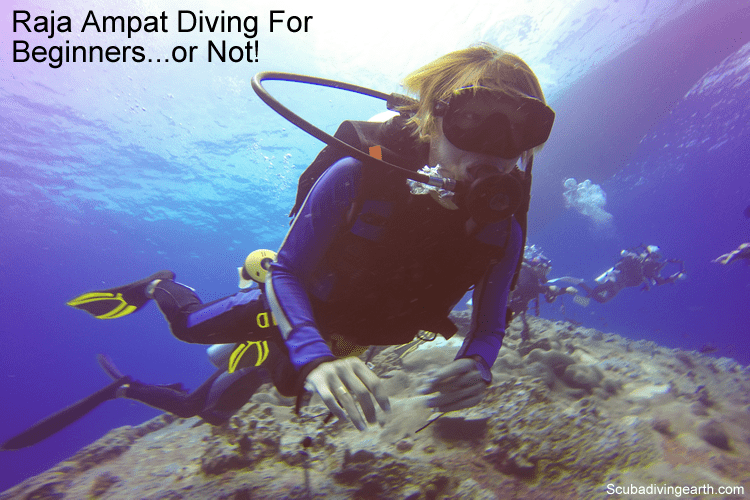
Raja Ampat diving for beginners…or not
To understand whether or not Raja Ampat in Indonesia is suitable for scuba diver beginners, it’s best to look at the type of diving there.
An important aspect to review about a scuba diver when looking at the type of scuba diving, is to look at their knowledge and experience.
By virtue of the fact that we are discussing beginner scuba divers, they will have minimal experience and some basic knowledge.
A beginner scuba diver is someone who has dived less than 20 times in my opinion. As a beginner it’s best to spend time focusing on the basic skills and to gain experience of these skills on relatively easy dives to begin with.
Indonesian liveaboards are not really suitable for beginner divers as some of the Komodo sites can require a cool and experienced head (although the good liveaboard safari operators will keep everyone informed as to the skill levels required on any day). Manado is okay for beginners as the visibility is normally good and conditions suitable for the less assured scuba diver.
FAQs on Dive The World – Where are the best places for beginners
Raja Ampat dive liveaboards table
Important note: If you prefer, towards the end of this article, I’ve included another table that shows more detail about the diver certification levels and diver logged dives too. The second table gives you the ability to sort the table in the order of your beginner certification or beginner logged dive level.
This first table of Raja Ampat liveaboards for beginner divers is in descending customer rating order, followed by Scuba Diving Luxury Rating (SDE Lux Rating, see below), so the liveaboards with the highest customer rating and the best SDE lux rating will be at the top of the list. If you want to change the list order, use the “Sort by” dropdown below.
This list includes Raja Ampat liveaboards if you have from “No logged dives” up to “10 logged dives” under your belt. When you click on your chosen liveaboard, look in the itinerary section as each dive itinerary will show the number of logged dives required.
| Discover Liveaboard | Customer Rating | SDE Lux Rating % | Flexible Booking | Dive Courses | Dietary Requirements | Nitrox | Gear Rental | |
|---|---|---|---|---|---|---|---|---|
 |
Review: MSY Tiger Blue; Book: MSY Tiger Blue | 9.6 | 81% | YES | YES | YES | NO | YES |
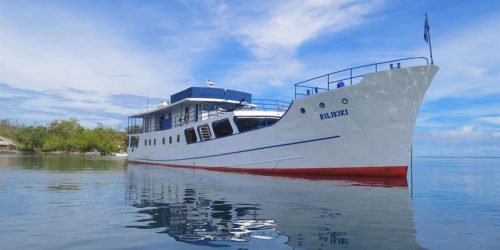 |
Review: MV Bilikiki; Book: MV Bilikiki | 9.6 | 75% | YES | YES | YES | YES | YES |
 |
Review: KLM Mikumba 2; Book: KLM Mikumba 2 | 9.6 | 73% | YES | YES | YES | NO | YES |
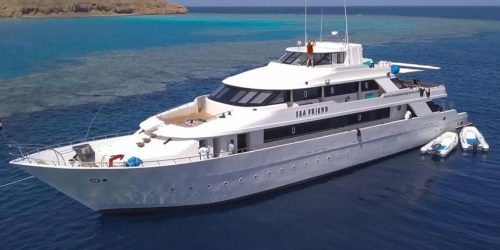 |
Review: MY Sea Friend; Book: MY Sea Friend | 9.6 | 71% | YES | YES | YES | YES | YES |
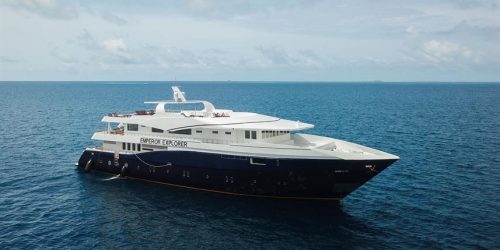 |
Review: MV Emperor Explorer; Book: MV Emperor Explorer | 9.6 | 63% | YES | YES | YES | YES | YES |
 |
Review: MSY Seahorse Liveaboard; Book: MSY Seahorse Liveaboard | 9.5 | 88% | YES | YES | YES | YES | YES |
 |
Review: Coralia; Book: Coralia | 9.5 | 85% | YES | YES | YES | YES | YES |
The Scuba Diving Earth Luxury Rating (SDE Lux Rating) is explained on each liveaboard review when you click the “Discover Liveaboard” link, and is my own Liveaboard Luxury Rating I’ve assigned to all liveaboards. Choosing between liveaboards is helped by customer scores, and if you get stuck choosing between two or three liveaboards, where each one has a high customer score out of 10, you can use the SDE Luxury Rating to help narrow down your choice.
Think about it like using Booking.com when searching for the best hotel. Booking.com also use a customer score where each customer rates hotels out of 10. This is similar to the liveaboard customer rating, which is also rated out of 10. But let’s say you only like to stay in hotels rated 8 and above on Booking.com, but you also want the hotel to have WIFI or parking, or to have a swimming pool etc. The features each hotel has is usually secondary to the score out of 10.
When I suggest an easy dive, I mean a shallow dive of less than 20 metres (66 feet). Plus a dive in safe waters, where there are no significant currents and there’s reasonable visibility.
So what are the basic underwater skills novice scuba divers need to master in the beginning?
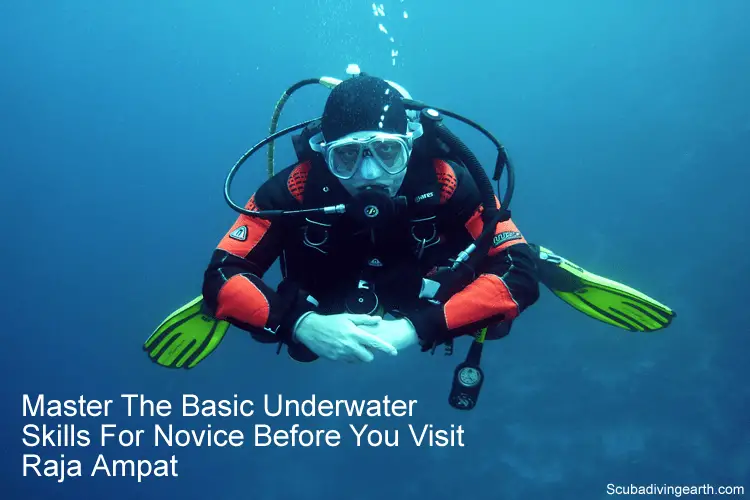
The basic skills for novice divers to master underwater before going to Raja Ampat include:
- Controlling and mastering your descent.
- Be in control of your buoyancy during the dive.
- Controlling and mastering your ascent.
- Managing your air consumption.
- Familiarisation with your scuba kit.
Let’s look at each of these basis scuba skills in turn.

Controlling and mastering your descent as a beginner diver
When you first begin scuba diving, once you’ve left the comfort and safety of the dive boat or liveaboard, you need to be confident about descending. The are a few skills at play here, but the most important is to make sure you carefully control your descent.
Your diving descent should be slow and controlled. You should also make sure you equalise your ears on your way down. Plus make sure you equalise the pressure in your mask, to prevent mask squeeze too.
Over time all these skills and techniques will become second nature. But in the beginning you have to be careful and think about what you are doing. Many beginner scuba divers are nervous in the beginning. Being nervous can make things more difficult to do, which is why beginner scuba divers should never dive too deep.
As with all things, practice makes perfect. Gaining experience by doing more dives will help to make diving easy. So that the descent becomes second nature.
The same applies for all the other skills, like controlling your buoyancy, explained below.
Think about descending on your dive as a beginner, but when the water is static. You are likely to need to think carefully about what you are doing.
Add to this thought process a current, and possibly a strong current, and you’ve just jumped in from your Raja Ampat liveaboard.
You look down and the bottom is moving underneath you. You are already slightly nervous and now you freak out! Not a good place to be, just before your descent.

Be in control of your buoyancy as a beginner scuba diver
Another skill that takes time to learn and master is buoyancy control. Buoyancy control for scuba divers is managed using your buoyancy control device or BCD.
Your buoyancy is best managed by adding or releasing small amounts of air at a time using your buoyancy control device. The object of the exercise being to achieve neutral buoyancy.
This skill is only mastered with practice and after diving a few times. Buoyancy is better controlled once you become familiar with your diving equipment.
At the end of your dive, it then becomes extremely important to be able to manage your ascent buoyancy.
This is done by letting out small amounts of air from your BCD as you ascend to the surface. You must prevent yourself from coming up too fast to avoid complications like decompression sickness DCS. DCS can happen on a fast ascent.
Imagine trying to control your ascent when everything is still new to you and you find yourself in a raging current. This is the time when things can go wrong.
I remember once getting tangled up in the line of my surface marker buoy with my dive buddy on an ascent from a strong drift dive in the Farne Islands.
More Reading: What is a surface marker buoy used for? (Safety diving equipment)
At the time I was an experienced diver too. Fortunately, because I had experience on my side, and because I remained calm, I managed to sort things out. But had I been a novice, I may have panicked.
Mastering your air consumption
Breathing from an aqualung is a whole new experience. But it’s an exciting experience.
However, it’s all about learning to breath slowly and normally. In the beginning as a novice and an inexperienced scuba diver, it’s likely your air consumption will be bad.
As you gain more diving experience and as you begin to relax on your dives, your air consumption will gradually improve.
Air consumption is important as it will impact on your dive time. The faster you consume your air, the shorter your dives will be. When you’re in a beautiful place like Raja Ampat, you’ll want your dives to last for as long as possible.
You will have paid a significant amount for your diving experience. Liveaboards in Raja Ampat (even the affordable liveaboards) are not cheap to dive from. So you don’t want your dives to be too time limited due to your inexperience and high air consumption.
Familiarisation with your scuba kit
The last skill I’m going to cover in this article is around familiarisation with your diving kit. With any new experience, everything about it is new to you. Over time you learn things and you become better at understanding how things work.
This is no different with scuba diving. Everything just takes time to learn. With experience and as you become more advanced, everything will become easier.
This is the same for your dive kit. When you first begin to scuba dive you won’t be familiar with your kit. Even if you buy your own diving equipment to dive near your home, which you take away with you.
If you rent your diving equipment in Raja Ampat on your liveaboard, this will all be new an unfamiliar to you.
Imagine being unfamilair with dive kit when you’re in a strong underwater current (see video below), this may be a step too far.
Dive with very strong current in Komodo, Indonesia
If you’ve never experienced a drift dive in a strong current, you might want to watch the video below. The drift dive starts at around 30 seconds into the video and is in Komodo.
You will see how fast things come up on you. You will notice how fast this diver is moving through the current. In a current like this it’s extremely easy to get separated from your dive buddies.
Not that it’s easy to stop in such a strong current, but if you did manage to, you only have to stop for a few moments and your dive buddy will be lost ahead of you.
When the visibility is good, like it is most of the time in Raja Ampat, this problem isn’t quotes as problematic as when you’re diving in low visibility.

Scuba diving Raja Ampat is too expensive and too good to miss out as a beginner
Scuba diving in Indonesia’s Raja Ampat is expensive, especially if you go aboard luxury liveaboards like the Dewi Nusantara. You want to be able to enjoy the diving experience to the full, and not miss out on some of the diving simply because the dive is for advanced divers only.
As mentioned above in the quote from Dive The World, they say ‘‘although the good liveaboard safari operators will keep everyone informed as to the skill levels required on any day.’
You don’t want to go to Raja Ampat to find one of the best dives of the day is outside your experience level. See below for the five top dives sites in Raja Ampat.
I’m sure there are some dives that will be totally safe for you in Raja Ampat, but many will not be. But also, Raja Ampat is a remote diving area and should something go wrong, you are a long way from a hospital or medical treatment.
When you are learning, the chances are that more things can go wrong. Don’t risk it. Be safe and gain more experience and gain additional certifications, like drift diving certificate, before you book that trip f a lifetime.
Top Dive Sites in Raja Ampat
The first two dive sites in this list come from Birds head Seascape’s top 5 dive sites in Raja Ampat. Both of which have currents.
Magic Mountain – in the Misool region
Magic Mountain is an offshore pinnacle and is Birds Head Seascape’s #1 dive site in Raja Ampat. The best time to dive this dive site is when the current is running, which counts you out if you’ve not got drift diving experience.
Most, if not all, of the liveaboards go to Misool.
Rated at # 1 of our “Top 5 Dive Sites in Raja Ampat” is the wonderful Magic Mountain (aka Shadow Reef) Located in the far south of Raja Ampat in the Misool region…When the current is running jump in and head straight down the sloping reef to watch schools of barracuda, fusiliers, and surgeonfish playing in the current.
Top 5 dives sites in Raja Ampat by Mike Veitch, Birds Head Seascape
There’s the chance to see manta rays on a cleaning station at the end of the pinnacle. There are also plenty of other underwater creatures to see, like wobbegong sharks and whitetip sharks.
Plus you’ll see barracuda, fusiliers, and surgeonfish playing in the current.
Video of Magic Mountain Misool
We were amazed by this manta. She used the strong currents washing over Magic Mountain to swoop and play and, deliberately or not, thrill the humans.
The Four Kings – East of Pele Island in southern Misool
Again in Misool, the Four Kings is also known for its currents. This dive site is #2 on Birds Head Seascapes’ top 5 dive sites in Raja Ampat.
Four Kings is a series of smaller submerged pinnacles in the middle of nowhere. Lucky divers often encounter pelagic mantas using the shallow plateaus as a cleaning station.
When the current isn’t too strong, you will often see turtles, pygmy seahorse and other fish. This dive site is also one where there are currents most of the time, which can be strong at times.
Fabiacet – 40 metres (131 feet)
Fabiacet is a deep and would require you to have properly mastered your buoyancy. Or alternatively, if you wish to dive deeper than a beginner’s depth of 18-20 metres (60-66 feet), you won’t be able to.
This dive site is known for its hammerheads, which swim around in the depths. So is not to be missed. Imagine your dive buddies speaking about the hammerheads they’ve seen, but you were stuck on the liveaboard because you were not experienced enough to dive.
Kri – or Cape Kri
This dive site is the most famous of all dive sites in Raja Ampat due to the record-breaking 374 species found on a single tank dive.
Cape Kri that put Raja Ampat on the map when Dr. Gerry Allen smashed his record for the total number of fish species on a single tank dive – 374 species!
Indonesia Travel – Raja Ampat, a paradise in an unexplored area for divers
This is a dive not to be missed. However, the currents there are mild to strong and is therefore only suited for intermediate to advanced divers.
There’s another chance to spot manta rays at Cape Kri, plus a whole host of other fish and underwater creatures – at least 374.
Table of Raja Ampat liveaboards suitable for beginners in detail
This list of Raja Ampat liveaboards for beginner divers is in descending customer rating order, followed by Scuba Diving Luxury Rating (SDE Lux Rating, see above), so the liveaboards with the highest customer rating and the best SDE lux rating will be at the top of the list. If you want to change the list order, use the “Sort by” dropdown below.
This list includes all Raja Ampat liveaboards that require you to have up to Open Water Diver certification or equivalent, and to have from “No logged dives” up to “20 logged dives” under your belt. You can sort the table in the order of your certification level or number of dives you have using the “Sort by” dropdown.
When you click on your chosen liveaboard, look in the itinerary section as each dive itinerary will show the number of logged dives required. Towards the end of this article, I’ve included another table that shows more detail about the dive level and diver certification too.
| Discover Liveaboard | Liveaboard Review Ratings | No Certificate needed | Open Water Diver | No minimum number of logged dives | Minimum 3-5 logged dives | Minimum 10 logged dives | Minimum 20 logged dives | |
|---|---|---|---|---|---|---|---|---|
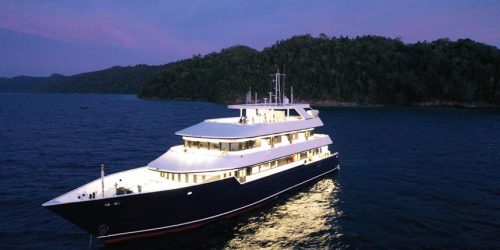 |
Review: MV Seaisee; Book: MV Seaisee | Customer Rating: 10; SDE Lux Rating: 90% | NO | YES | NO | NO | YES | NO |
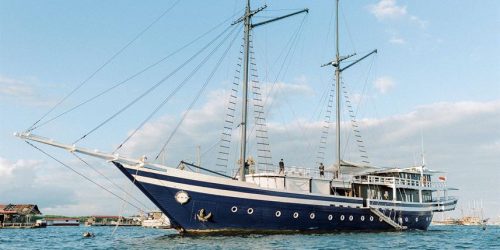 |
Review: Scubaspa Zen; Book: Scubaspa Zen | Customer Rating: 10; SDE Lux Rating: 88% | NO | NO | NO | NO | NO | NO |
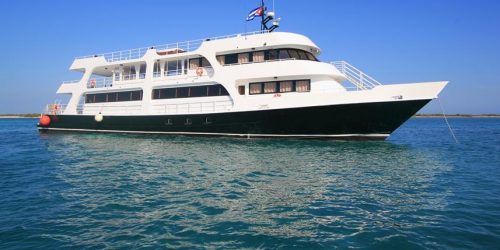 |
Review: Jardines Avalon Fleet - Charter Only; Book: Jardines Avalon Fleet - Charter Only | Customer Rating: 10; SDE Lux Rating: 83% | NO | YES | YES | NO | NO | NO |
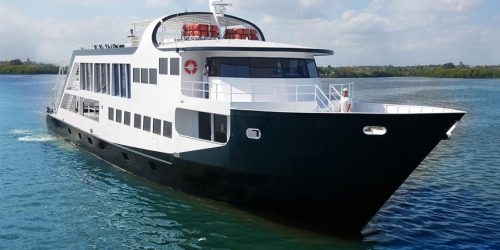 |
Review: Jardines Avalon Fleet; Book: Jardines Avalon Fleet | Customer Rating: 10; SDE Lux Rating: 83% | NO | YES | YES | NO | NO | NO |
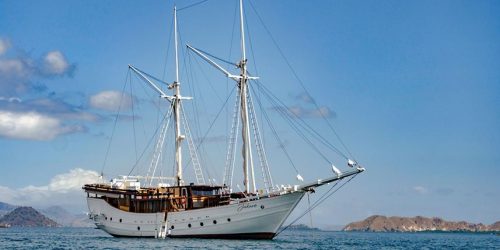 |
Review: Jakaré; Book: Jakaré | Customer Rating: 10; SDE Lux Rating: 81% | NO | YES | NO | NO | YES | NO |
 |
Review: All Star Cuan Law; Book: All Star Cuan Law | Customer Rating: 10; SDE Lux Rating: 79% | NO | YES | NO | NO | YES | NO |
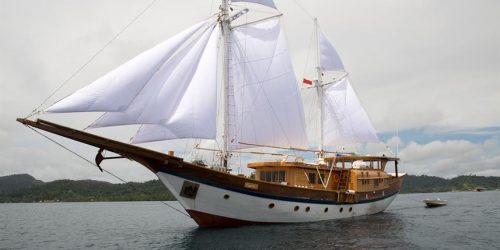 |
Review: Leyla; Book: Leyla | Customer Rating: 10; SDE Lux Rating: 73% | NO | YES | YES | NO | NO | YES |
Pro diver tip: To make sure you really enjoy your trip to dive Raja Ampat, and if you don’t have the right diver certification level or the correct number of dives required for your chosen liveaboard, get some more dives in before you go.
I hope you enjoyed this article about Raja Ampat Diving For Beginners
I’d love to hear from you. Tell us about your adventures of diving and snorkeling, in the comments below. Please also share your photos. Either from your underwater cameras or videos from your waterproof Gopro’s!
If this article hasn’t answered all of your questions. If you have more questions either about snorkeling or types of scuba diving (or specifically about Raja Ampat Diving For Beginners), please comment below with your questions.
There will also be many more articles about scuba diving (and snorkeling) for you to read and learn about these fabulous sports.
Have fun and be safe!




